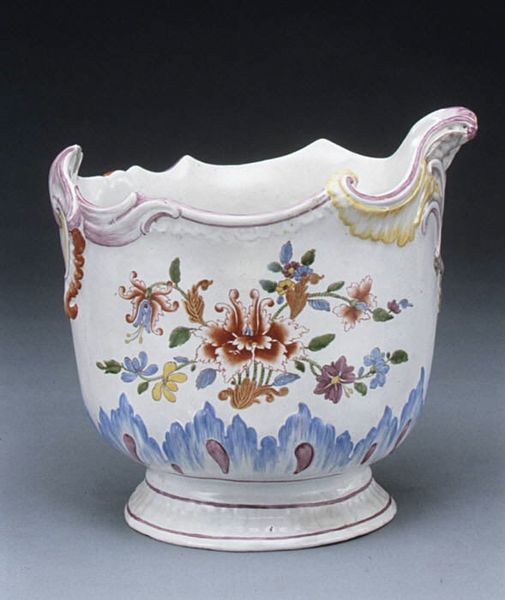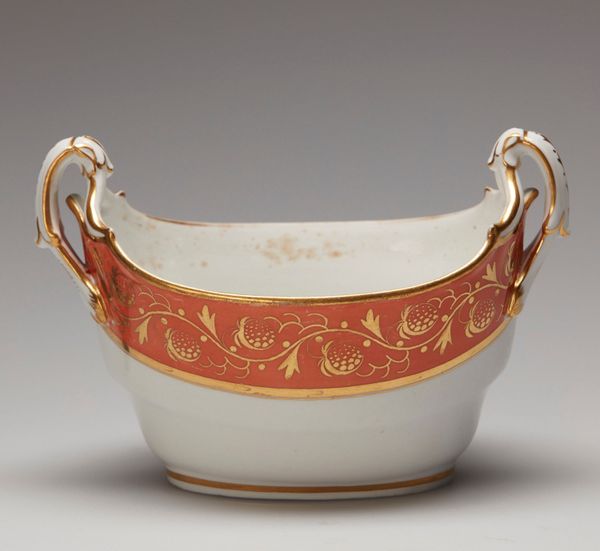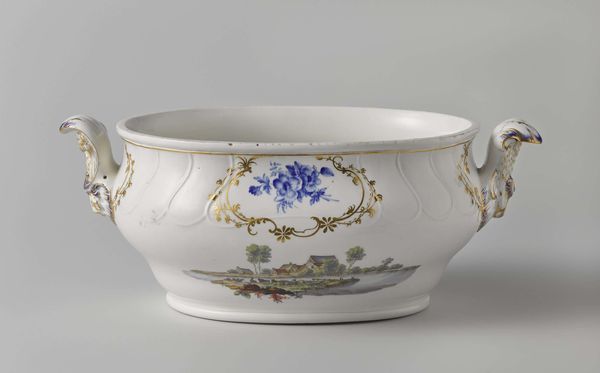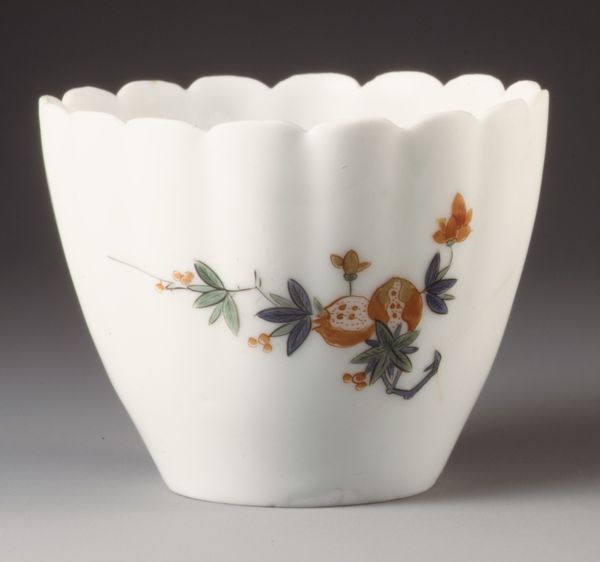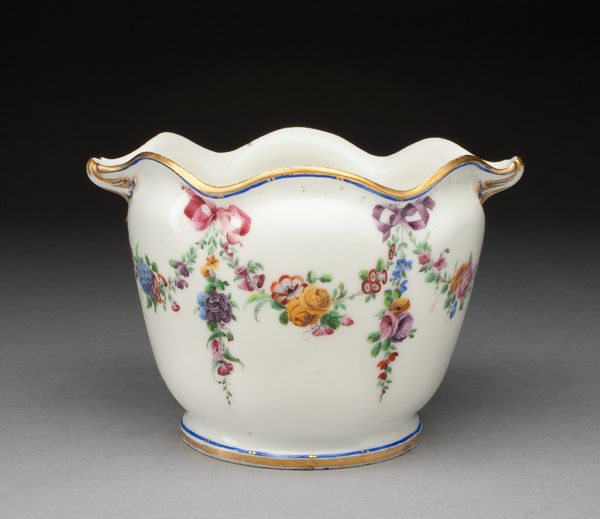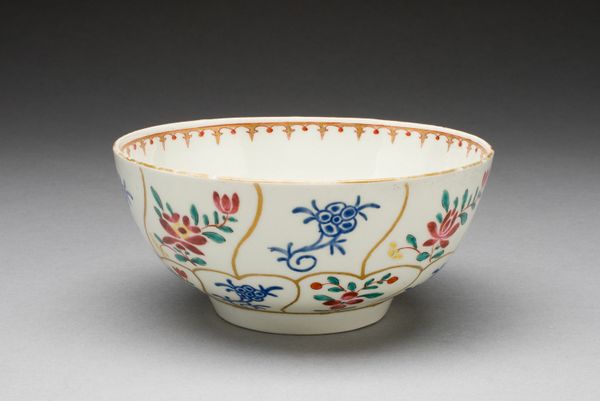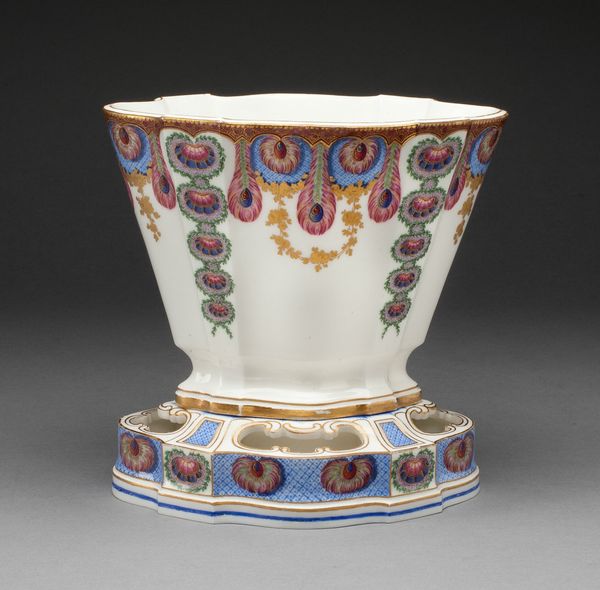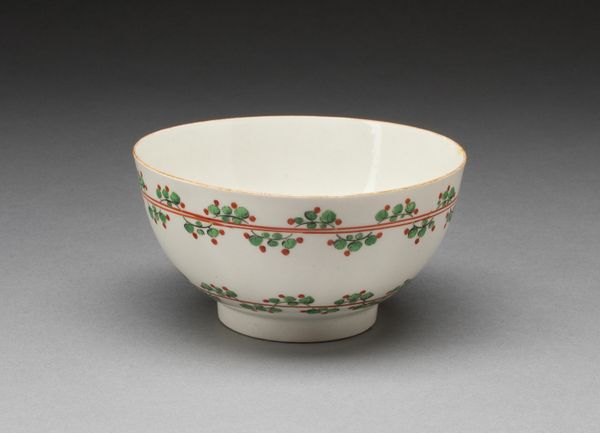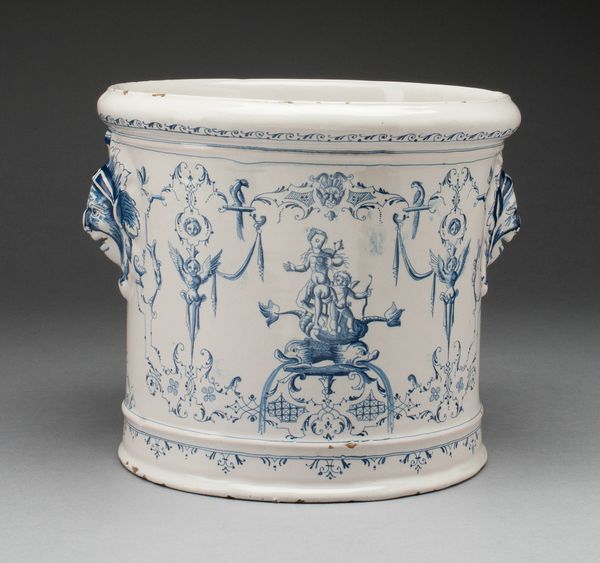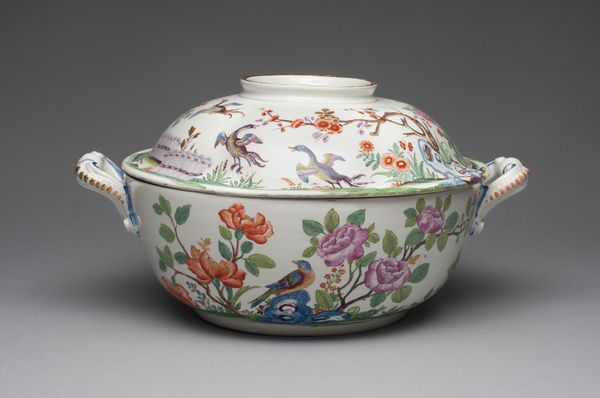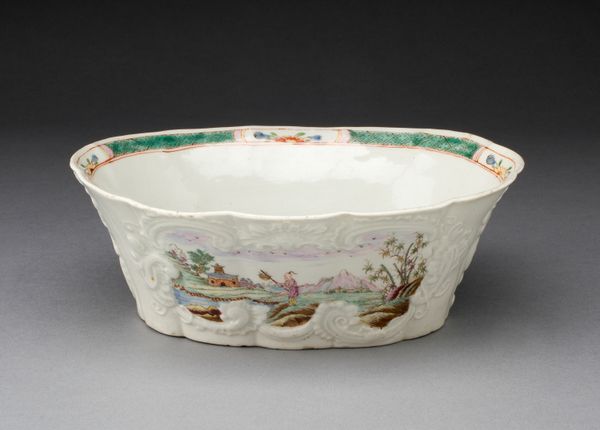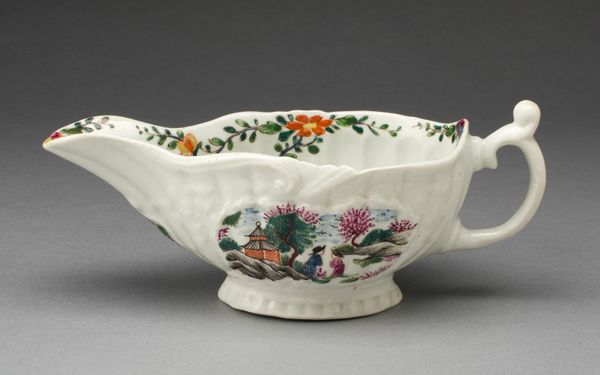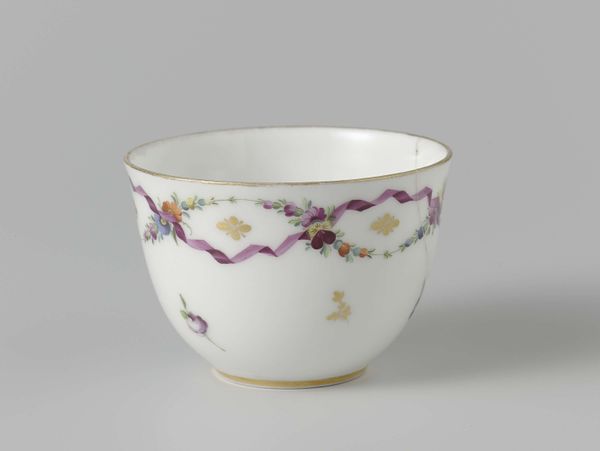
ceramic, porcelain, sculpture
#
ceramic
#
porcelain
#
sculpture
#
decorative-art
Dimensions: Height: 4 1/4 in. (10.8 cm); Diameter: 5 1/2 in. (14 cm)
Copyright: Public Domain
Curator: This piece, known as “Container,” dates to 1730-1745, from the Vienna manufactory. It’s crafted from painted porcelain. You’ll find it at The Metropolitan Museum of Art. Editor: Oh, that’s sweet! My first thought is "sugar bowl," though it also feels somehow very austere despite the delicate florals. Curator: "Sugar bowl" gets right at it! Porcelain during this period was extremely costly, which imbued objects such as this with associations of wealth and privilege, far removed from austere realities for the broader population. It was very much about showing off. Editor: Yes, those delicate flowers practically scream privilege, don’t they? Yet, the simplicity of the cylinder, the sparseness of the floral arrangement… it’s holding back, right? Almost like they wanted to seem casual while screaming 'I have this ridiculously expensive sugar bowl!' Curator: The shape and decorations do express restraint and, shall we say, a deliberate elegance—the very embodiment of upper-class aesthetics of the period, actually. Porcelain tableware held immense symbolic power, demonstrating global connections and sophisticated consumption. Think tea ceremonies. Editor: Oh! A tea caddy. Very fancy indeed. I wonder what sort of flowers these are supposed to be? Maybe the buyer picked them specially. Did the arrangement or even just the species mean anything special back then, do you think? Curator: Definitely. Flower symbolism was rampant at the time; entire dictionaries were devoted to it. A buyer would definitely consider that, knowing their purchase and the messages it sent would be closely scrutinized by their peers and rivals alike. Editor: How exhausting! Knowing every rose or sprig you bought sent secret signals... Still, it's really beautiful and I could see it sitting on a very polished surface. Curator: Beautifully made objects always capture their time; even these small pieces reflect entire socio-economic systems and values, from manufacturing to marketing to collecting practices. Editor: It's hard not to look at an object this pretty and wonder about who enjoyed it hundreds of years ago. Thanks!
Comments
No comments
Be the first to comment and join the conversation on the ultimate creative platform.
